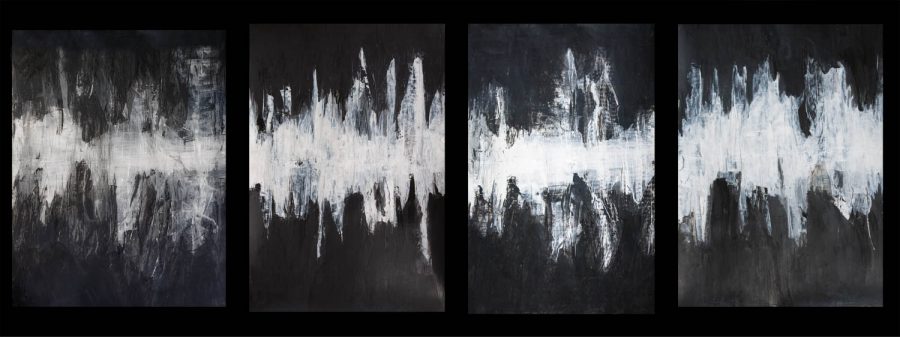2D Animation on the Big Screen
December 10, 2019
If you look at what’s playing in theaters, there are plenty of movies to choose from. Action-packed thrillers, heart-wrenching dramas, thought-provoking indies, and kid-friendly three-dimensionally animated (3D) films. But it’s been a long time since two-dimensional (2D) animation was featured on the big screen.
2D and the big screen are never completely separate. Countries like France and Japan regularly produce high-quality 2D films. “Your Name,” a traditionally animated Japanese film from 2017, grossed $361 million worldwide, making it the highest-grossing Japanese film of all time. However, the United States has not seen an American-made 2D film on the big screen in a long time.
Why has there been a decrease in 2D animation? It hasn’t gone away completely. In fact, television shows are constantly made with 2D vector programs. New examples of this are Disney’s “Amphibia”, Cartoon Network’s “Thundercats Roar”, and Nickelodeon’s “The Loud House.”
In the movie realm 2D animation is almost nonexistent, but the practice is still very much alive. It just isn’t the same style that is nostalgic to many movie-goers today. Envisioning 2D films, fans think of Disney’s fairytale phase, with princesses and folklore galore, but 2D animation has evolved a lot over time.
Let’s take a look at three different 2D animated movies from three different companies: Disney’s “Snow White and the Seven Dwarfs”, DreamWorks’ “Sinbad: Legend of the Seven Seas”, and Netflix’s “Klaus”.
“Snow White” was the first animated feature film to ever hit theaters. In 1938, “Snow White” made $8 million internationally during its initial release (equivalent to $146 million in 2019) and became the first of many 2D films Disney would make.
What makes Snow White and all the classic princesses so memorable? What about hand-drawn animation makes them nostalgic to this day?
Imperfection.
“Snow White” is a traditionally animated movie, meaning that animators drew each frame by hand. Vectors are more commonly used in cartoons today: they are made by computers, and create seamless ‘in’ and ‘out’ points with no janky ‘inbetweens.’ This technology wasn’t available in the 1930’s, so the traditional animation style gives character to the movie.
“Snow White” was the beginning of a legacy of films. For years, traditional animation brought in audiences far and wide. The downfall of traditional 2D began with the rise of computer animation, as well as a new medium: 3D.
“Sinbad: Legends of the Seven Seas” was a 2D movie created in a 3D market. Made by DreamWorks in 2003, “Sinbad” was competing with the infamous Pixar movie, “Finding Nemo.”
In the 2000’s, computer-generated imagery (CGI) was used regularly in film. In fact, DreamWorks incorporated CGI into parts of Sinbad alongside the 2D animation in the film. CGI made it possible for animators to have a convenient reusable asset for elements like large boats or sea monsters rather than re-drawing those large props in each frame.
However, “Sinbad” performed poorly in the box office. After nearly going bankrupt in 2003, DreamWorks decided to switch to only computer animation. “Sinbad” was the last DreamWorks film to use traditional animation.
Many studios followed suit. In 2009, Disney’s “Princess and the Frog” was the last 2D Disney film to hit the box-office. Studios such as Blue Sky Studios and Sony Pictures Animation have only created 3D animated films. Traditional 2D animation was abandoned on the big screen for nearly a decade.
However, multiple recent films have seen the implementation of traditional animation. Sony Pictures produced “Spiderman: Into the Spider-Verse” in 2018, a film that uses both 3D and 2D animation techniques. Netflix just released a new traditional 2D film, “Klaus,” this month.
“Spider-Verse” is a 3D film that uses 2D animation techniques to create an imperfect ‘comic book’ inspired look. Animators used traditional 2D animation techniques like ‘squash and stretch,’ and rendered the film at only 12-24 frames per second to achieve this effect.
“Klaus,” the newest 2D animated film, shows a new take on traditional animation. Director Sergio Pablos wanted to create a film that showed what the evolution of 2D would look like if companies did not use computer animation.
Although “Klaus” is hand-drawn, it does not look like other traditionally animated movies. By incorporating unique textures and lighting techniques, the film offers a modern take on 2D animation.
Will America ever see traditional 2D animation on the big screen again? Of course it will. Animation has shifted, changed, and evolved over the decades. Japanese animation still incorporates hand-drawn animation into its films and has been extremely successful. But 2D animation takes time, especially if it’s hand-drawn. “Klaus” started production in 2015 and wasn’t released until November 2019.
With the success of both “Klaus” and “Spiderman: Into the Spider-Verse,” it’s likely we will see more 2D animation on the screen within the next few years. The style might not be the same as the classical Disney princesses, but it will be back.


